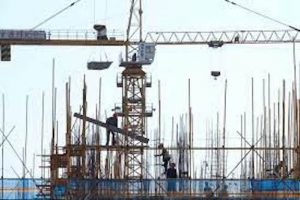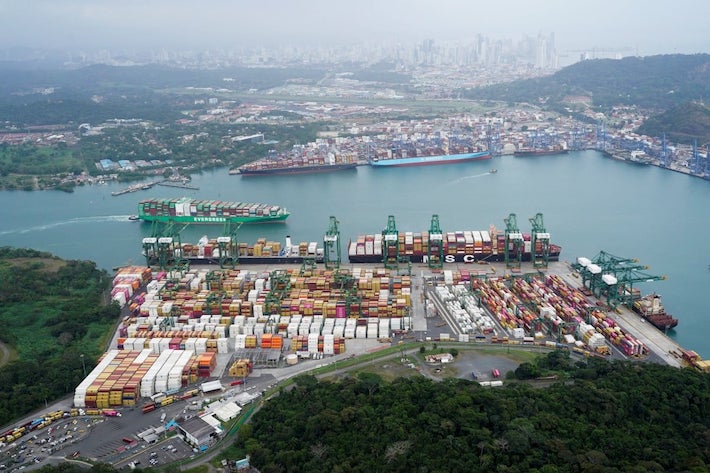India will spend $24 billion on efforts to create more jobs over the next five years and boost rural spending, Finance Minister Nirmala Sitharaman said on Tuesday.
In her speech to unveil the 2024/25 budget, Sitharaman said the government was focused on driving growth through jobs, training and small businesses.
She said the country’s inflation rate was stable and moving toward the government’s target of 4%, while the economy grew at an impressive 8.2% in the last fiscal year.
ALSO SEE: China Secretly Built The World’s Fastest Supercomputers – WSJ
“India’s economic growth continues to be the shining exception and will remain so in the years ahead,” the finance minister said.
Indian Prime Minister Narendra Modi’s first post-election budget aimed to lay out an economic vision that balanced fiscal prudence with the expectations of disgruntled voters and the demands of his coalition partners.
“This budget will decide the direction of our work for the next five years and this will lay the foundation of fulfilling our objective to make India a developed country by 2047,” Modi said on Monday.
Modi’s Hindu nationalist Bharatiya Janata Party (BJP) failed to secure a majority in the election last month, making it dependant on allies to form a government for the first time since he came to power more than a decade ago.
The budget aims to cut taxes for the middle class, provide relief for distressed rural areas and heed the demands of two key coalition partners – Andhra Pradesh’s Telugu Desam Party and Bihar’s Janata Dal (United) – for billions of dollars in additional funding for their regions.
Concern over surge in wealth disparity
The government will also look to keep at bay a resurgent opposition which has criticised the Modi government for a lack of jobs, high cost of living and growing income inequality.
According to a report by World Inequality Lab, wealth concentrated in the richest 1% of India’s population is at its highest in six decades, while youth unemployment stands at over 17% according to government estimates.
Initial reactions appeared to be largely positive.
“The triad of welfare spends, capital expenditure and fiscal discipline has been beautifully balanced by the government in this budget,” Sandeep Nayak, CEO of Centrum Broking (Retail) in Mumbai, said. “There is a good amount of welfare spend on women-led development, the MSME sector and the agriculture sector covering a large part of the populace.”
“Augmenting the welfare spends with an adequate thrust on capital expenditure while containing the fiscal deficit at 4.9% of GDP is a fine balancing act. However, the increase in capital gains tax and securities transaction tax is a dampener for capital markets.”
Sakshi Gupta, principal economist at HDFC Bank in Gurugram, said: “The budget successfully engineered a fine balance between supporting job creation and skilling, rural development and agriculture along with continued focus on infrastructure spending without compromising on fiscal consolidation.
“The reduction in the fiscal deficit and commitment to achieving a fiscal deficit below 4.5% by FY26 is positive for India’s debt sustainability. The budget announcements are broadly positive for consumption and overall growth.”
Anand Ramanathan, partner and consumer products and retail sector leader with Deloitte India in Bengaluru, said: “The budget focuses on important areas such as climate-resistant seed variety distribution, scaling digital public infrastructure and natural farming which will improve farm level productivity.”
Infrastructure spending
A government report published on Monday forecast economic growth of between 6.5% and 7% for the current fiscal year, slightly below consensus analysts’ estimates.
The government does, however, have enough cover from the central bank to ensure it stays on course to narrow the budget gap and finance its infrastructure projects.
In May, the Reserve Bank of India transferred a $25-billion surplus to the government that will help it cover tax cuts, help for rural areas and coalition partners’ demands for regional funding.
Over the last three years, the government nearly doubled spending on long-term infrastructure projects as a way to push growth and generate jobs and plans to spend 11 trillion rupees ($131.51 billion) on such projects this year.
On Monday, the government’s economic survey warned of rising risks from a surging equity market, which is also drawing retail investors into risky derivatives trading.
- Reuters with additional input and editing by Jim Pollard
ALSO SEE:
G20 Ministers Discuss Digital Tax as US Tariff Threat Looms
A European Push Could Help India Fill Carbon Removal Gaps
India Plans 12 Power Plants Near Disputed Northeastern Frontier
India Solar Output Slowest in 6 Years Amid Scorching Heatwave
India’s Surging Economy at Risk From Severe Water Shortages
Surge in Indian Equity Capital Market Deals Seen Continuing
India, China Pushing For ‘Multiple Pathways’ to Net Zero
Cost of Carbon Capture by 2050 May be Double Estimates – IME





















